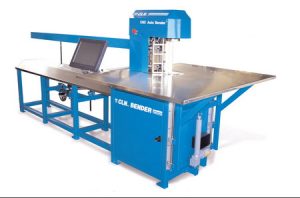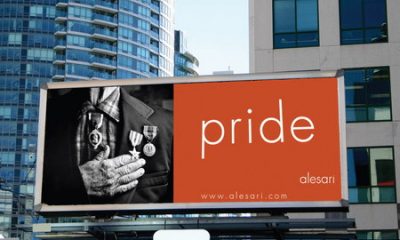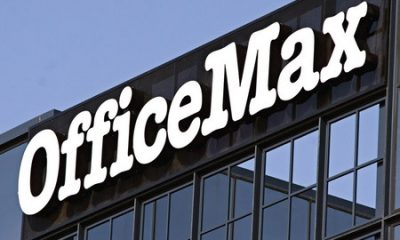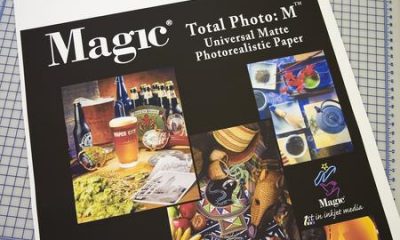The Bends
To further automate your shop, study channel-letter bending machines.
Published
17 years agoon
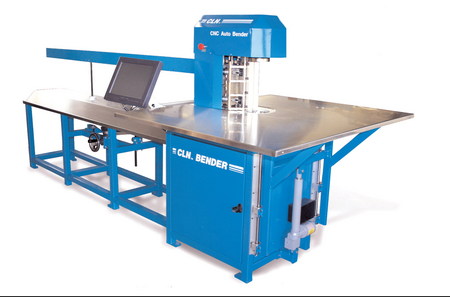
Watching a channel-letter bender work is a lot like watching a birthday party of four-year-old children – you’re never sure what will happen next.
Dan Hale, signshop owner and ST columnist, in his first column (see April 2007, page 66), wrote that he’d begun his signmaking career in the pre-computer days. He said it was an era when signs were handcrafted, and sign artists actually “pulled a brush” when lettering signs. Those times, he observed, weren’t necessarily better – just different.
Many veteran signmakers will relate to Dan’s April narrative. They can easily testify, the past 25 years of technological introductions have appreciably transformed the signmaking field.
Las year, I recently traced that transformation. To profile the industry’s technology timeline for ST’s Centennial Edition, I reviewed numerous back issues. I discovered that ST’s classified-ad section had, over the years, inadvertently chronicled the declining demand for sign artists. In 1981, when computers were first significant, the magazine’s classified ads listed 10 sign-artist positions. After 1990, no ads called for such workers.
Despite the decline, many topnotch sign artists successfully adapted to the change by becoming high-end specialists in art, design and sign crafts. Because signmaking is a multi-task industry, many hand-letterers simply merged into other shop jobs.
Still, automation, both digital and mechanical, has – is – streamlining signmaking.
AdvertisementMaking change
Senior Editor Susan Conner, in her article, “Taking Charge in Times of Change” (page 98), reports on her recent change-management survey of sign companies. Saying the sign industry has changed to adjust to technological advancements, new standards, mergers/acquisitions and economic ups and downs, Susan summarizes her informal study with this: “The sign industry responds well to adjustments, perhaps because it fulfills the needs of other businesses that change, often drastically.”
I think it’s also because, in signshops, everyone pitches in wherever needed – designers assisting on large install jobs, for example (the survey also confirmed this). Crosstraining and blue-collar teamwork are integral parts of the sign business.
You won’t find blue-collar teamwork in your management books, because it starts with beers and engine overhauls.
Sign mechanics
In December, at USSC’s Sign World USA 2006, I talked with David and Kevin Kane, co-owners of |2120| (Lake Worth, FL), a company that builds machines that form channel letters. Its channel-letter (return) bending machine, the Auto Bender, is one of several offered to signmakers, to further automate their shops. Interestingly, David and Kevin’s business multiplied from their machine experimentations within the family-owned Kane Sign Mfg., also in Lake Worth.
AdvertisementChannel-letter bending machines assist a shop’s sheetmetal workers by eliminating several technical – and arduous – tasks of bending channel-letter returns. A “return” is the channel-letter’s sheetmetal side; it “returns” from the Plexiglas® acrylic sign face to the mounting wall or raceway.
Kevin said CLN built its first prototype channel-letter bender some 15 years ago. Before venturing too far into the field of metal bending, they interviewed sign mechanics to see what they wanted.
They wanted something simple, affordable and tough. Since then, CLN has upgraded and improved the machine (it’s designed to handle four times the envisaged use) and, eventually, developed the one-machine enterprise into an international business. Today, the company specializes in building channel-letter bending machines, plus other, standard and custom-designed automated machines.
The five-minute channel letter
Carl Ondracek fired up |2258|’s (Plano, TX) plant that manufacturers channel-letters in 1994. He builds the Accu-Bend letter-forming system, which automatically shapes channel-letter returns; the Accu-Cut router, which cuts letter fronts or backs; and the Accu-Clinch system, which uses air/hydraulic power to clinch the letter returns and backs together.
AdvertisementCarl says the Accu-Bend will layout, notch, flange and bend a full, final-shaped, channel-letter return in five minutes or less. Hand-done, the task could require 30 to 45 minutes.
A flange is a half-inch-wide, 90° bend along the return’s back edge. It’s for attaching the channel letter’s backside. Notching allows the flange to bend smoothly. To see the need, fold a half-inch-wide crease on the edge of a sheet of paper and try to roll it up.
The Accu-Bend comprises a computer console; a motorized, material-feed table; and the bending machine. It measures 12 x 6 -ft. and weighs 1,800 lbs. The table can accommodate up to 400 lbs. of coiled sheetmetal that can vary from 1 to 9.5 in. wide; the metal’s thickness can vary from 0.03 to 0.063 in. It’s a heavy-duty unit.
How they work
To appreciate how bending machines work, try making a miniature channel letter from paper scrap. Using scissors, cut a long, inch-wide, paper strip, and shape it into a 2-in.-high, uppercase, letter “A.” Think of Helvetica or Arial, in outline form. The first three or four outside folds are easy, but, as you double back for the inside folds, the unfolded end (the tail) tangles into the part you’ve just folded.
The tail is the troublesome part. You can’t fold the bottom riser without the tail hitting the inside top.
See this with a 6-in.-wide, 0.063-in. thick, sheet-aluminum strip that’s being machine bent to form an 18-in.-high channel letter. How does a bending machine prevent that damn metal tail from clanging – and jamming – into the partially formed letter, especially when making reverse bends?
Easy. A bending machine uses forward-thinking software, which, typically, is a combination of fuzzy-logic software linked to a computer numeric control (CNC) system that’s linked to location sensors which feedback job-position processes.
Engineers use fuzzy-logic soft¬ware to process imprecise information. In machine systems, fuzzy-logic software applies practical geometry, and information from feedback sensors, to solve a yes/no approach for continuously occurring variables. Simply put, one or more sequential actions will trigger a search for, and acceptance of, a subsequent action. For example, it can bypass two or three bends, to fold an advanced crease before its presence causes a conflict, and then reverse, to perform the several previous bends.
Imagine the math needed to form serif letters.
CNC is an evolutionary progres¬sion of a machine-control process developed to speed aircraft manufac¬turing in World War II. Originally, it was a hard-wired numerical control (NC) system that often comprised roller-equipped, micro switches that turned on and off by dropping into notches cut into small, clock-driven wheels. Turned on, the switches triggered electric motors that activated mechanisms to produce specific actions – lowering a metal-cutting, saw blade for example, then activating a motor that rotated a flywheel that, in turn, pushes the blade. The length of the notch determined the machine action time.
Logical use
Arete Corp. (Denver) produces channel-letter automation equipment, commencing with ReturnShop GTO, that comprises the Arete Notcher GTO and the Arete Flanger. It handles, feeds, lays out, notches, dimples and shears channel-letter returns to length, then flanges the returns, readying them for bending. Arete also builds the TrimShop, Arete Caddy, Arete Notcher and Arete Flanger.
The Notcher GTO accepts DXF files from mainstream sign-design packages. Its functions include easy-to-read icons and graphics – and it’s easily tied into any Arete Flanger, to complete the system. An advantage of Arete’s machines is their straightforward functions, plus they’re built as components that can be logically arranged in smaller spaces. The company also offers a unique, tabletop, channel-letter brake.
Finally, you can’t see channel letters without studying Aries Graphics Intl.’s (San Marcos, CA) Neon Wizard software. Its Auto Tube Layout element allows you to specify the number of neon tubes within a channel letter, their diameter, the tube-to-edge clearance and the between-tubes gap. The software also lets you position a raceway and will position the tube breaches in the raceway.
SPONSORED VIDEO
Introducing the Sign Industry Podcast
The Sign Industry Podcast is a platform for every sign person out there — from the old-timers who bent neon and hand-lettered boats to those venturing into new technologies — we want to get their stories out for everyone to hear. Come join us and listen to stories, learn tricks or techniques, and get insights of what’s to come. We are the world’s second oldest profession. The folks who started the world’s oldest profession needed a sign.
You may like

NUtec Digital Ink Invests in Solar Energy for Facility

5 Reasons to Sell a Sign Company Plus 6 Options

21 Larry Albright Plasma Globes, Crackle Tubes and More
Subscribe

Bulletins
Get the most important news and business ideas from Signs of the Times magazine's news bulletin.
Most Popular
-

 Tip Sheet1 week ago
Tip Sheet1 week agoAlways Brand Yourself and Wear Fewer Hats — Two of April’s Sign Tips
-

 Photo Gallery3 days ago
Photo Gallery3 days ago30 Snapshots of the 2024 ISA Sign Expo
-

 Ask Signs of the Times5 days ago
Ask Signs of the Times5 days agoWhy Are Signs from Canva so Overloaded and Similar?
-

 Real Deal2 weeks ago
Real Deal2 weeks agoA Woman Sign Company Owner Confronts a Sexist Wholesaler
-

 Benchmarks1 week ago
Benchmarks1 week ago6 Sports Venue Signs Deserving a Standing Ovation
-

 Photo Gallery8 hours ago
Photo Gallery8 hours ago21 Larry Albright Plasma Globes, Crackle Tubes and More
-

 Women in Signs2 weeks ago
Women in Signs2 weeks ago2024 Women in Signs: Megan Bradley
-

 Women in Signs1 week ago
Women in Signs1 week ago2024 Women in Signs: Ashley Borell

